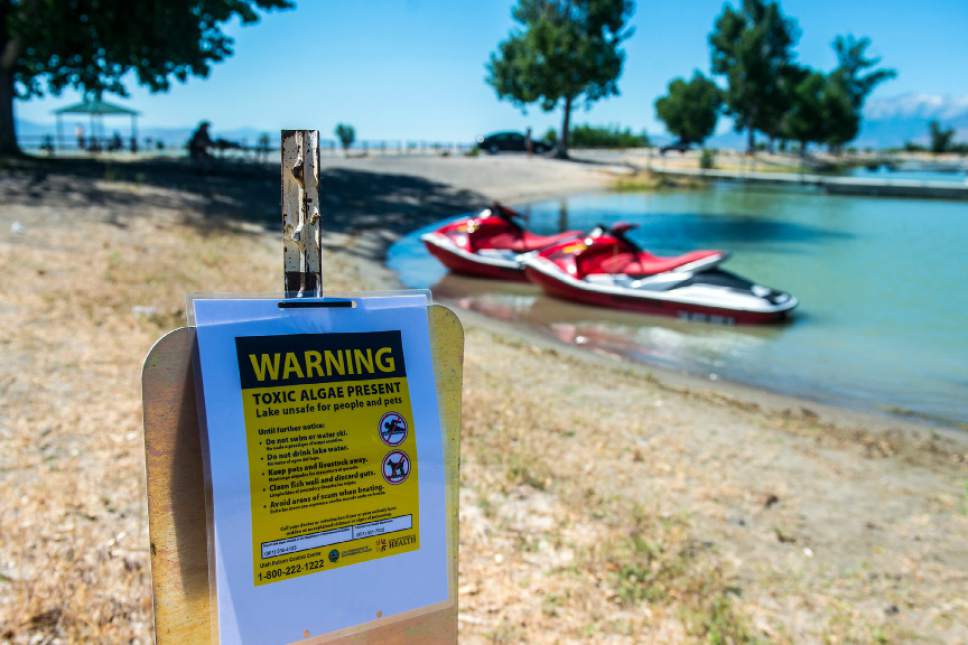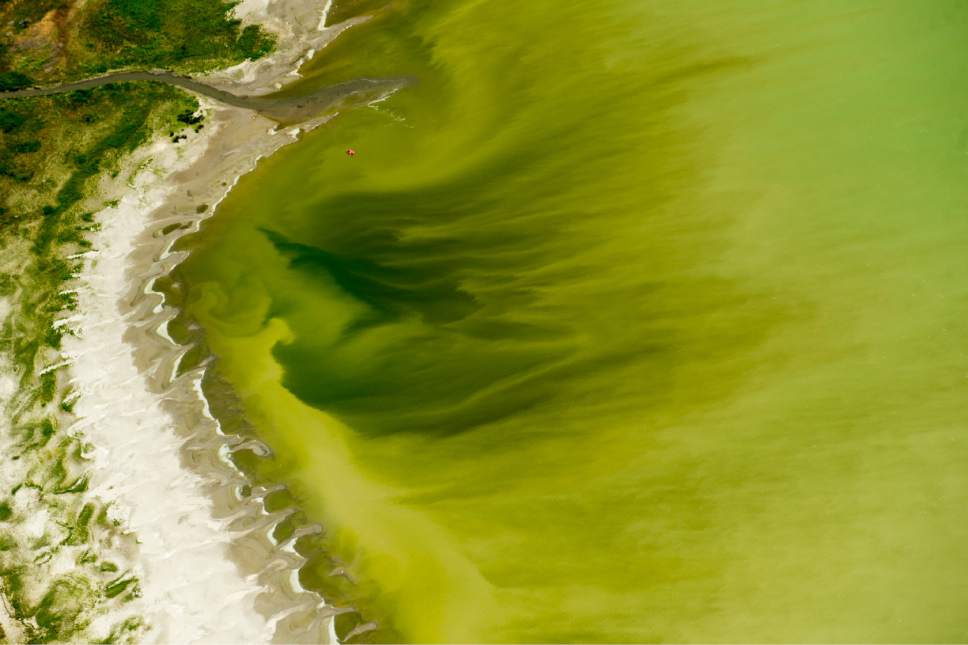This is an archived article that was published on sltrib.com in 2017, and information in the article may be outdated. It is provided only for personal research purposes and may not be reprinted.
While boaters still are welcome to enter Utah Lake heading into the busy Fourth of July weekend, weather conditions and the presence of harmful bacteria in the water have teed up the possibility of an explosion in algae that could force closures.
As of Sunday afternoon, there were no closures, according to Aislynn Tolman-Hill, spokeswoman for the Utah County Health Department.
The Department of Environmental Quality is awaiting test results that will show whether the bloom contains harmful cyanotoxins. The presence of a bloom in the lake's southern end at Provo Bay prompted the Utah County Health Department to issue warnings for recreationists to avoid contact with scum in the water.
A weather forecast of near triple-digit temperatures and sunny skies — two conditions that can help create explosive algae growth — have officials ready for a possible spread that could reach the Jordan River.
"They're so volatile and dependent on sunshine, on heat [and on] stagnant conditions, which we're really in that situation right now," Tolman-Hill said Saturday. "It's the perfect condition for them."
The bloom was already spreading Friday and into Saturday, moving from its source in Provo Bay. Health officials hope the lack of strong winds prevents quicker movement.
"It does seem to be kind of moving, perhaps expanding a bit, moving a little bit north," she said. "So that's where it becomes a concern potentially for the Jordan River."
Agencies are using satellite imagery to monitor the spread. The bloom's size and any test results showing harmful toxins would prompt further action.
"You don't want to be swimming in algae," Tolman-Hill said. "Specifically with a potentially harmful algal bloom. That's something we're concerned about."
DEQ officials are awaiting tests that will show the potential toxicity of a bloom. They then will pass along that information to health departments to decide what action, if any, to take.
"We're still seeing cell count, which is an indicator of the potential toxic-producing algae," DEQ spokeswoman Donna Kemp Spangler said Saturday. "If it's a high level of toxicity that is considered dangerous above the recreational value, the health department may want to choose to close it."
The activity has put multiple agencies on alert as the state waits to see if the weather and algal growth spawn a repeat of the unprecedented bloom and spread from a year ago. The 2016 bloom covered 90 percent of Utah Lake and caused concerns throughout much of the summer that water systems in the Salt Lake Valley would be affected via the Jordan River.
The Salt Lake County Health Department is already monitoring the Jordan River and canals it feeds but hasn't yet detected blooms in the county's water, spokeswoman Pam Davenport wrote in an email Saturday.
Twitter: @TaylorWAnderson







